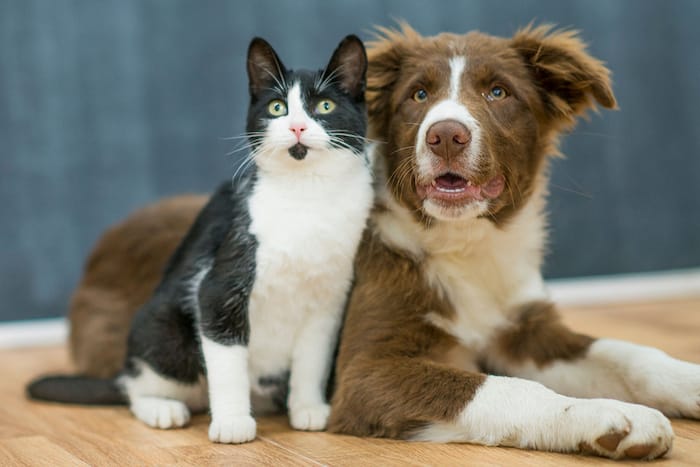Proper nutrition plays a crucial role in the health and longevity of our pets. Whether you’re a dog person, a cat lover, or a fan of small mammals, understanding the basic principles of pet nutrition can help you provide the best care for your furry friend. This article explores the science behind pet nutrition and offers insights into how to meet your pet’s dietary needs effectively.

The Basics of Pet Nutrition
Nutrition is the science of food and its relationship to health. It involves studying the nutrients found in food, how the body uses these nutrients, and the relationship between diet, health, and disease. In pets, as in humans, nutrition is essential for all life processes, including growth, reproduction, repair of body tissues, and maintenance of a healthy immune system.
Nutrient Requirements: Proteins, Fats, and Carbohydrates
Pets require a balanced intake of proteins, fats, and carbohydrates. Proteins are the building blocks of the body, essential for growth and repair. They supply amino acids, some of which pets cannot synthesize on their own.
Fats are a concentrated source of energy. They supply essential fatty acids and facilitate the absorption of fat-soluble vitamins. Carbohydrates, while not essential for cats, provide a valuable source of energy for dogs and other pets.
Vitamins and Minerals
Vitamins and minerals are necessary for various metabolic functions. Each vitamin and mineral has a specific role in the body and, in certain amounts, is essential for maintaining good health.
Vitamins are divided into two groups: fat-soluble (A, D, E, and K) and water-soluble (B vitamins and vitamin C). Fat-soluble vitamins are stored in the body and used as needed, while water-soluble vitamins need to be replaced regularly in the diet.
Minerals are categorized as macro-minerals (required in larger amounts, such as calcium, phosphorus, and magnesium) and trace minerals (required in smaller amounts, such as iron, zinc, and selenium).

Understanding Pet Food Labels
Pet food labels are an essential resource for understanding what you’re feeding your pet. They contain information about the product’s nutrient content and ingredients. However, they can often be confusing for pet owners.
Ingredients are listed by weight, with the heaviest ingredients listed first. However, this can be misleading because ingredients with high moisture content (such as fresh meat) may appear before dry ingredients (like grains or meat meal), even though they may contribute fewer nutrients.
Guaranteed analysis lists the minimum levels of crude protein and fat and maximum levels of crude fiber and moisture. While this provides a basic idea of the nutrient content, it doesn’t give the full picture of the food’s quality or digestibility.
Customizing Your Pet’s Diet
While commercially available pet foods are formulated to meet the general nutritional needs of pets, your pet’s age, breed, health status, and lifestyle may necessitate specific dietary considerations. Puppies and kittens, for instance, require more protein and calories than adult pets, while senior pets may benefit from diets lower in fat and higher in fiber.
Pets with certain health conditions may also require special diets. For example, a pet with kidney disease may need a diet low in phosphorus, while a diabetic pet may benefit from a diet high in fiber and complex carbohydrates.
The Role of Your Veterinarian
In navigating the complex world of pet nutrition, your veterinarian is your best resource. They can provide personalized advice based on your pet’s specific needs. This is where professionals like the Montford Vet become invaluable. They can assess your pet’s health, consider their lifestyle, and offer diet recommendations tailored to their individual requirements.

Importance of Hydration
Hydration is an often-overlooked aspect of pet nutrition. While we know that clean, fresh water should always be available to pets, the moisture content of their food is also a significant consideration. Wet foods can help maintain hydration, particularly for cats, who naturally have a low thirst drive.
Treats and Snacks
While treats and snacks can be useful for training and bonding, they should be given in moderation. They often contain more fats and sugars than regular pet food and can contribute to obesity and dental problems if overused. Treats should make up no more than 10% of your pet’s daily caloric intake.
Food Allergies and Intolerances
Food allergies and intolerances can occur in pets, just as in humans. Symptoms may include chronic ear inflammation, gastrointestinal problems, and chronic diarrhea or gas. If you suspect your pet has a food allergy or intolerance, consult with your vet. They can guide you through an elimination diet to identify the offending ingredient and recommend suitable alternatives.
The Dangers of Obesity
Obesity is a growing concern in pets, leading to health problems like diabetes, heart disease, and arthritis. Regular exercise and portion control are crucial to maintaining a healthy weight. It’s important to know the calorie content of your pet’s food and to adjust portions based on their age, weight, and activity level. Regular weigh-ins and body condition scoring can help monitor your pet’s weight effectively.
Human Foods: What’s Safe and What’s Not
While it can be tempting to share your food with your pet, not all human foods are safe for them. Some, like chocolate, grapes, and onions, can be toxic. Other foods, like high-fat or spicy foods, can cause gastrointestinal upset. It’s important to know what’s safe and what’s not and to educate children and guests about not feeding your pet inappropriate foods. If in doubt, consult your vet.
The Controversy of Raw and Grain-Free Diets
In recent years, raw and grain-free diets have gained popularity among pet owners. However, these diets are controversial. Raw diets raise concerns about the risk of bacterial contamination and nutrient imbalances. Grain-free diets, while beneficial for pets with specific grain allergies, have recently been linked to an increased risk of heart disease in dogs. Before switching to such diets, it’s essential to discuss the potential risks and benefits with your veterinarian.
In conclusion, understanding the science of pet nutrition is key to ensuring your pet’s health and wellbeing. By providing a balanced diet and considering your pet’s individual needs, you can contribute significantly to their quality of life and longevity.
